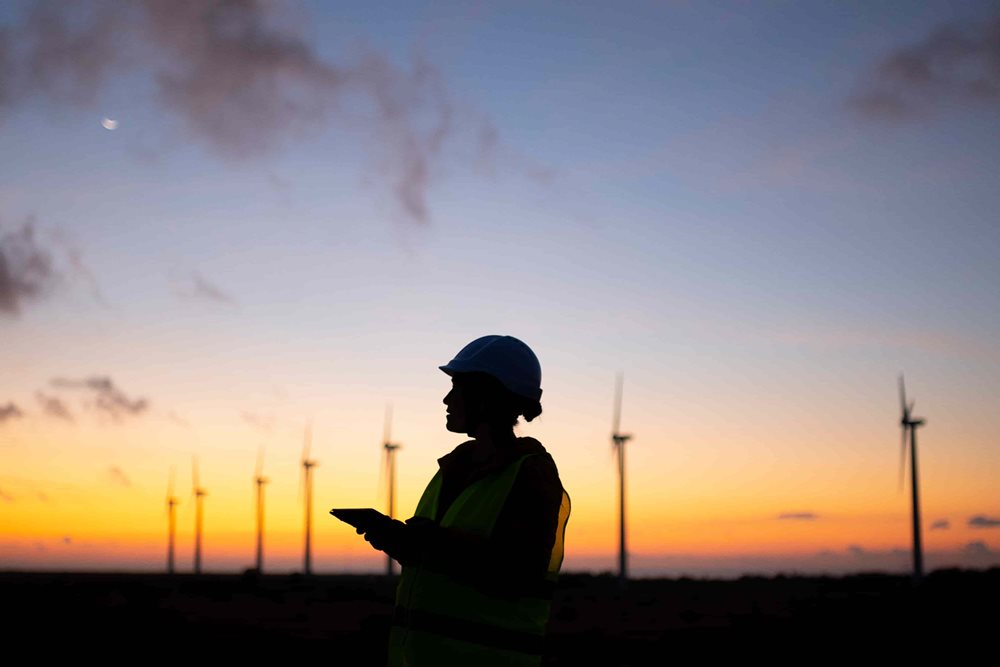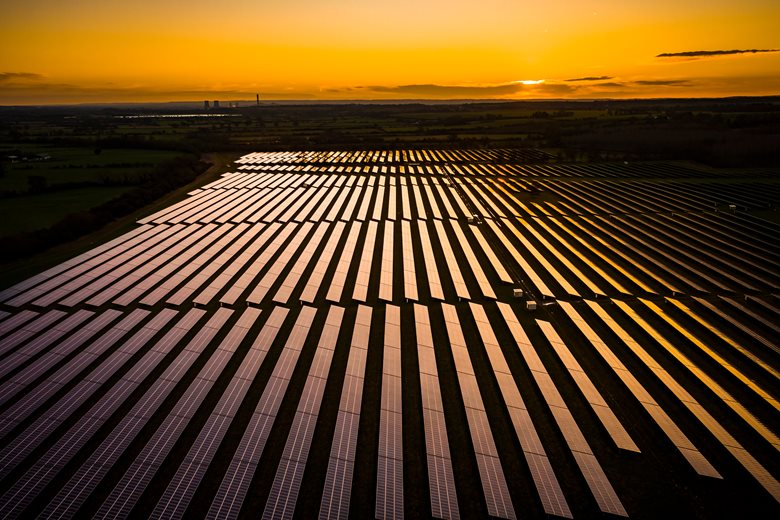.png?width=1000)
Raising capital for renewable energy projects
Securing capital for green energy projects now is key to participation in the green energy future. Established sources of renewable energy are now often cheaper than fossil fuels and are expected to account for nearly half of global electricity consumption by 2030.
Raising capital for a green energy startup or project requires a high level of organization and the ability to demonstrate future value. Thorough due diligence to prepare for investor scrutiny can help to maximize the valuation and the value of the capital raise.
How to raise capital for renewable energy
To reach the goal of net-zero greenhouse gas emissions by the early 2030’s the OECD calculates that a total global clean energy investment of 4.5 trillion USD is needed. In 2023, clean energy investment was only 1.8 trillion globally, so to close the gap there will need to be significant capital dedicated to renewable energy in the next 5-8 years.
Despite the challenging economic conditions coming into 2025, investors continue to look for opportunities to back established clean energy technologies. Clean energy investment continues to boom globally, with clean energy accounting for almost three-quarters of overall energy investment growth in 2023. Renewable power represented the largest share of clean energy investment, reaching approximately 700 billion USD globally in 2023.
Some companies choose debt financing, like commercial loans, revolving credit or term loans, as an option to retain ownership and control. With the cost of debt increasing, more companies will trade equity for investment through the capital raising process.
The first step is understanding the different ways to raise capital and the trade-offs each entails.
Venture capital
Venture capital firms offer capital investment in return for equity, allowing start-ups and green companies to move climate projects forward. While venture capital investment has declined due to high borrowing costs and uncertain economic conditions, there is a clear opportunity for companies with demonstrable value to access capital.
While climate investments slowed in 2024, startups increased their share of climate tech funding. Investment in AI-centred climate ventures was strong through 2024 as companies demonstrated productivity and efficiency in renewable energy. Investment in climate technology for adaptation and resilience accounted for a quarter (28%) of deals in the first three-quarters of 2024.
Larger venture capital firms tend to invest in mid-stage and late-stage projects, ensuring projects are funded to completion and the benefits realised. One advantage of large firms is that climate tech startups can benefit from members’ industry expertise to inform business decisions and scale effectively.
Thorough preparation is key to finding a source of venture capital in a tight and competitive market. Telling a compelling story and showing the data that informs the narrative will make securing venture capital more likely at any stage of renewable development.

Equity crowdfunding
Crowd-funding platforms specializing in renewable energy and sustainability allow individual investors to contribute small or large capital investments in return for equity.
Crowdfunding platforms have different models, from equity to debt, peer-to-peer lending, reward, tokenisation, donation or mini-bonds. Investors receive a return if the project reaches completion, partial ownership or some other benefit, which may vary by platform.
Crowdfunding is most popular for early startups, and offers various benefits to green energy companies, depending on the platform selected. The due diligence required to gain investment is lower than other types of capital raising, and it’s typically easier to begin.
Blockchain and tokenization of energy projects
Tokenization enables green energy companies to transfer the value of tangible assets, like infrastructure, into digital tokens traded on a blockchain network. The United Nations highlighted its potential in 2018.
Blockchain tokens may play a role in ensuring transparency around green-washing by providing accurate and complete transaction records. Initial coin offerings (ICO) can play a role in funding renewable energy projects, as is already happening in France under a dedicated regulatory scheme.
An example of a green energy project using tokenization is the Yellow Pine Solar Project in the USA. Here, renewable energy certificates (RECs) are tokenized to enable liquidity for investors and energy producers.
The Brooklyn Microgrid Project launched in 2016 and tokenized ownership in 2018 using the Ethereum blockchain. This additional funding allowed the project to expand its reach and demonstrated the potential for blockchain technology to enable decentralized and sustainable energy systems.
Assigning tax credits as part of project financing
Since 2005, renewable energy projects have been incentivized by US tax credits. Tax benefits can be assigned in exchange for equity investments. An investor or ‘limited partner’ may receive the tax benefit in return for capital provided to the general partner, responsible for the project progress.
Under this system, capital for renewable energy in the US can include investment, debt and tax equity. The balance of these changes as the project progresses and becomes profitable.
From 2023, renewable energy developers can sell tax credits in a one-off transaction for cash.
Many other countries offer generous tax incentives for renewable energy. In Canada, a refundable tax credit for capital invested in the adoption and operation of new clean technology property began on 28 March 2024 and continues to evolve. Australia plans to introduce an uncapped but time-limited tax incentive for renewable hydrogen production between 2027 and 2040 for projects reaching final investment by 2030.

Preparing for a renewable energy capital raise
Preparation is key for renewable energy companies seeking funding, whether through seed funds, a Series A, B, or a later capital raise. Once the potential investors have been identified, swift action can secure the capital for the next stage of growth.
Due diligence for renewable energy capital raising
Investors will want to see the company’s current financial and operational health, including intellectual property, assets and talent. Following a tried and tested capital raise checklist can ensure you fully understand your critical business information before the questions come in.
Technical due diligence
Technical due diligence for renewable energy projects checks and verifies that the assets, engineering systems and processes used in renewable energy production can fulfil the financial projections made. The exact aspects considered will vary depending on the specific project and stage of development.
Investors will want to assess the integrity of renewable energy production assets to estimate the remaining lifespan, including maintenance costs. The availability profile of the asset over its lifetime is also simulated or modelled to predict the amount of energy it can create.
A yearly production degradation profile, while challenging to quantify, provides a realistic assessment of the drop in efficiency over time. Considering failure rates that result in loss of revenue and taking operational losses into account to accurately estimate project yield demonstrate realistic financial projections.
Learn more: download the technical due diligence checklist
Regulatory due diligence
Renewable energy is highly regulated, with complex regulations in place being superseded by new regulations across countries globally. This changing environment makes regulatory due diligence essential ahead of a raise.
Investors will want to understand how current regulatory requirements are fulfilled, and how the company is preparing to meet the coming regulatory changes in the relevant jurisdictions and potential future markets.
Learn more: download the regulatory due diligence checklist
ESG due diligence
Renewable energy companies can attract investment by preparing environmental, social and governance (ESG) due diligence. According to KPMG, 63% of investors say they would pay a premium for a target that can demonstrate high ESG maturity, and that weakness in this area can lead to failure of a raise.
Decarbonization plans have a financial value and extend beyond the project outcomes to the energy efficiency of transport, equipment and buildings.
Environmental, health and safety (EHS) programs should be audited to eliminate or minimize the use of dangerous chemicals and reduce waste. Safe workplace practices that protect employees also have financial benefits, lower legal costs and can enhance the employer's reputation.
Be ready to secure capital for renewable energy with Ansarada
The best way to prepare for investor scrutiny is to start early. With Ansarada’s secure virtual data room and digital deal workflow, you can take the time to organise, structure and redact information.
There’s nothing to pay until you invite the first investor, so you have plenty of time to organise business information and select the most appropriate capital-raising pathway for your renewable energy project.
Maximise your raise and be ready for investor scrutiny
Questions about renewable energy capital raising
How do renewable energy projects get funding?
Funding for renewable energy projects can come from debt, venture capital, trading tax credits for private equity, crowdfunding or tokenization of assets using blockchain technology.
What are the key financial incentives and grants available for renewable energy startups?
In the United States, federal tax credits reduce the tax burden on clean energy projects. The Investment Tax Credit (ITC) is an upfront tax credit claimed once the project is in production and usually used for solar. The Production Tax Credit (PTC) is a per kWh tax credit for electricity generated that is claimed once in 10 years, typically used for wind.
How can small to medium-sized companies attract investors for renewable energy initiatives?
Small to medium enterprises (SMEs) can attract investors with a solid business plan highlighting the project’s potential for environmental and social impact and financial return. By demonstrating a clear understanding of market trends, regulatory benefits and innovative technology and leveraging networks to connect with the right investors, SMEs can raise capital to fund a green energy project.